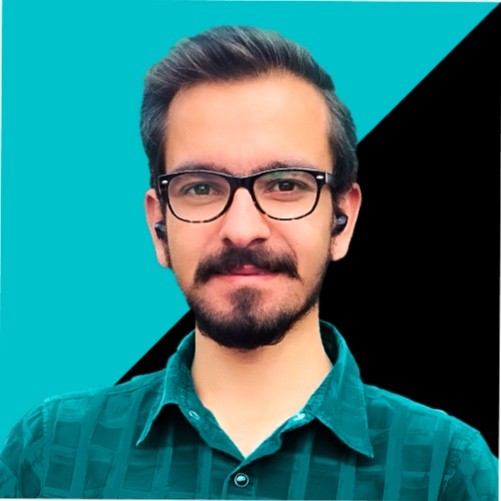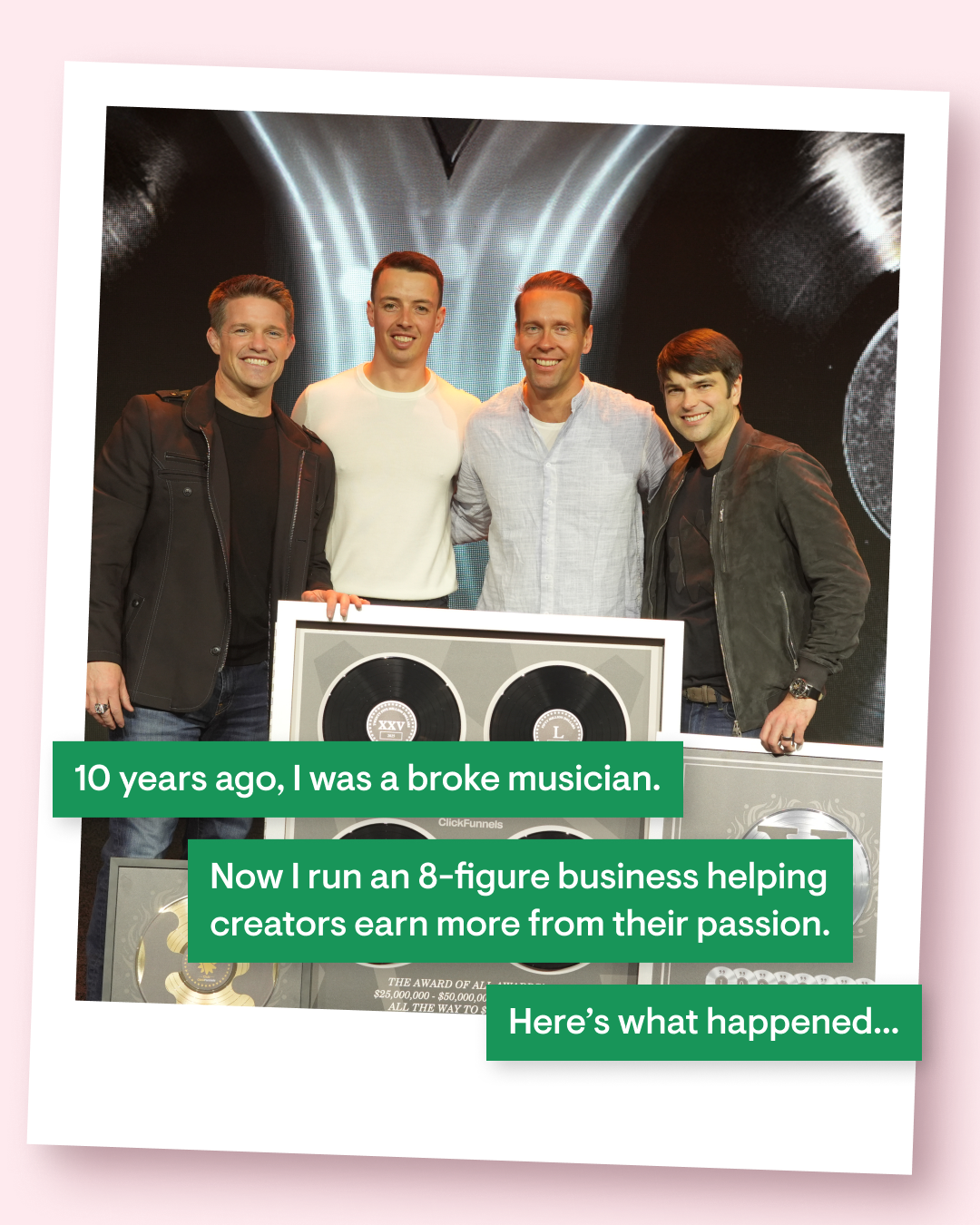Why a Big Following Doesn’t Equal Big Revenue
If having 100,000+ followers meant guaranteed business success, influencers would be millionaires.
But they’re not.
80% of influencers struggle to monetize their audience effectively, according to Influencer Marketing Hub.
Meanwhile, some of the highest-earning coaches don’t have a massive social media presence—but they run six and seven-figure businesses.
How?
They don’t chase vanity metrics like likes, shares, and viral posts.
Instead, they focus on high-value engagement, premium client experiences, and automation.

If you're a coach, consultant, or expert who doesn’t have a massive following, that isn't a disadvantage.
It’s an opportunity—because small, highly engaged communities convert better than large, disengaged audiences.
In this article, we’ll break down five things successful coaches do to grow their business without chasing social media clout.
And by the end, you’ll see why coaches with small audiences are thriving—and how you can, too.
The Myth of Going Viral: Why Followers Don’t Equal Clients
Many coaches believe that if they could just go viral, their business would take off. More followers, more exposure, more sales—right?
Wrong.
According to Hootsuite, the average Instagram engagement rate is less than 1%, meaning that even accounts with 100,000 followers only get meaningful interactions from a tiny fraction of their audience. YouTube isn’t much better—only 3.1% of subscribers regularly watch a creator’s content.
A large following doesn’t translate to consistent revenue—but a highly engaged, smaller audience does.
In 2019, an Instagram influencer with 2.6 million followers made headlines when she failed to sell even 36 t-shirts despite her massive audience (The Atlantic). Her followers liked her posts, but they didn’t trust her enough to buy from her.
Meanwhile, smaller, highly engaged communities convert at significantly higher rates.
According to Influencer Marketing Hub, micro-influencers (fewer than 50,000 followers) have up to 7x higher engagement rates than larger creators.
The Reality:
- More followers don’t equal more sales.
- A highly engaged, smaller audience converts better than an unengaged large one.
- Focusing on audience size leads to burnout. Focusing on audience depth leads to long-term profitability.
Instead of chasing exposure, coaches should prioritize depth of engagement—because a smaller group of paying clients always beats thousands of passive followers.
Prioritize Transformation, Not Just Content
Coaches often think more content = more value.
That’s why they spend hours posting Instagram reels, writing LinkedIn articles, and hosting free webinars—hoping their audience will engage.

Reality check: 97% of people who buy online courses never complete them (Harvard Business Review)
That means content alone isn’t enough.What high-earning coaches do differently
✅ They don’t just provide information—they guide people through real transformation.
✅ They sell a clear outcome, not just a course, PDF, or a set of videos.
✅ They create structured learning experiences, so clients actually implement what they learn.
Example: Imagine you’re a fitness coach. Posting 100 Instagram workout tips won’t guarantee client results. But a structured, step-by-step fitness challenge inside your own coaching app? That delivers real transformation.
Instead of throwing more content at your audience, create structured, goal-driven coaching programs.
How to Convert a Small Audience into High-Paying Clients
A small, engaged audience is more valuable than a large, unengaged one—but only if you know how to convert them into paying clients. Many coaches believe they need to reach more people to increase revenue. In reality, the key to growth is nurturing the right people.
Here’s how successful coaches turn a small following into high-paying clients:
Step 1: Identify Your High-Intent Followers
Not everyone in your audience is ready to invest. The key is to identify the people who are.
Look at:
- Who engages consistently—comments, shares, replies to your emails.
- Who asks questions about your coaching, services, or pricing.
- Who consumes your content repeatedly (returning viewers on Instagram stories, LinkedIn posts, YouTube, etc.).
Instead of chasing new leads, focus on deepening relationships with these existing engaged followers.
Step 2: Create a Small, High-Value Offer
Selling a $5,000 coaching program to a cold audience is difficult. Instead, start with a lower-risk, high-value offer that leads into your premium services.
Examples:
- A 4-week challenge for $297.
- A VIP day coaching session for $997.
- A small-group workshop at $497 per person.
Successful coaches don’t just sell courses or PDFs—they create guided experiences that help clients achieve real results.

Step 3: Move Clients into a Premium Experience
Once a client has had a positive experience with your introductory offer, they are far more likely to invest in a higher-priced, long-term coaching program. This is why coaches who scale successfully move clients into a private, controlled space—like their own coaching app—where they can nurture engagement and sell premium services without distractions.
Instead of trying to convert thousands of people, focus on attracting, nurturing, and upselling the right 50–100 clients into a high-value experience. This strategy allows coaches with small audiences to scale faster than those constantly chasing more reach.
Create a Premium Experience (Not a Low-Priced Offer)
Coaches with small audiences don’t compete on price.
They compete on value.
The “Cheap vs. Premium” Problem
Low-Priced Offers:
- Attract low-commitment buyers who don’t engage.
- Require large volumes of customers to be profitable.
- Lead to burnout from constantly chasing new sales.
Premium Offers:
- Attract serious clients willing to invest.
- Allow you to work with fewer, high-paying clients.
- Increase client commitment and engagement.
Megan Sumrell, founder of The Pink Bee, built a 7-figure coaching business with an audience of less than 18,000 people.
How? She didn’t rely on social media or discount pricing. Instead, she raised her prices and created a premium coaching experience inside her own app.

Instead of underpricing your expertise, build a premium experience that justifies premium pricing and high-ticket subscriptions.
Own Your Audience Relationship (Not the Algorithm’s)
If your entire business relies on Instagram, TikTok, or Facebook, you’re not in control.
Social media is rented land.Instagram can cut your reach overnight (like it did in 2023). Facebook can deprioritize business pages (like it did in 2018). TikTok can ban accounts without notice (as many creators have experienced).
What high-earning coaches do differently
✅ They don’t build their entire business on social media.
✅ They own their audience experience inside their own ecosystem.
✅ They create a space where engagement is consistent and predictable.
Nicki Bianco, founder of Slice Squad, originally charged $27/month for hairstyling education. When she shifted from social media to her own app, she raised her prices to $3,700 for the same content—and generated $300,000 per month in just six months.

She didn’t chase more followers. She took control of her audience relationship. Instead of relying on rented space, build an audience experience that you fully own.
Automate Engagement (So You’re Not Always “On”)
A small audience isn’t a disadvantage if they’re highly engaged.
The problem? Most coaches manually handle engagement. They DM clients, send reminders, and constantly post—just to stay visible.
High-earning coaches don’t do this.How they automate engagement
✅ Push notifications → Keeps clients engaged without manual follow ups
✅ Progress tracking → Helps clients stay motivated without you having to manually keep track everyday.
✅ Communities → Facilitate quality conversations led by your community for your community.
Apps with push notifications see 88% higher engagement rates than those without (Business of Apps).
For example, Meditation apps like Calm and Headspace don’t rely on Instagram to keep users engaged. They use in-app push notifications and progress tracking to bring users back daily.
Instead of chasing engagement, build a system that keeps clients active automatically.

Focus on Results, Not Reach
Coaches who charge premium prices don’t charge for content.
They charge for results.
Why a Small Audience Can Be More Profitable
Let me introduce you to John:
He’s got an impressive 100,000 followers, but there’s a catch—his engagement rate is just 0.5%. That means only 500 people are actually paying attention.
With a 1% sales conversion rate, John manages to land just 5 sales. Since he sells low-cost content, he can only charge $49/month at most.
💰 John’s earnings: 5 x $49 = $245/month
Despite his huge following, John struggles to monetize because his audience isn’t deeply engaged.
Then there’s Maya:
She, on the other hand, has a much smaller following—just 3,000 followers—but her engagement rate is a stunning 20%! That means she has 600 truly engaged fans.
Maya sells transformation and results, allowing her to charge premium prices of $300+/month. With a 6% sales conversion rate, she closes 36 sales.
💰 Maya’s earnings: 36 x $300 = $10,800/month
That’s 44x John’s earnings!
The Bottom Line
John may have a lot more followers, but Maya has the connection, trust and transformation.
Would you rather be John or Maya? 🚀
This is why smaller, engaged audiences are more profitable than large, disengaged ones. Instead of chasing audience growth, focus on deepening engagement and delivering results.
Final Thoughts: The Shift You Need Before 2025
Most coaches believe that if they had more followers, they’d make more money.
That’s not true.
The most successful coaches today aren’t chasing algorithms or posting endlessly.
They’re focusing on:
✅ Transformation (not just content)
✅ Premium experiences (not low prices)
✅ Owning their audience (not relying on social media)
✅ Automated engagement (not manual work)
✅ Results (not vanity metrics)
And they’re building these systems inside their own apps.
If you’re ready to stop relying on rented social media space and start creating a predictable, high-income coaching business, your own Passion App is the way to go.














